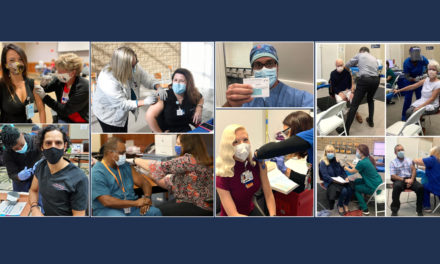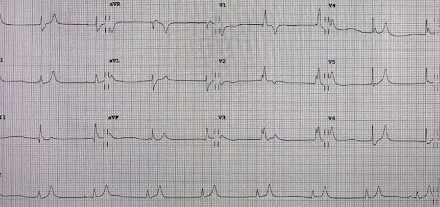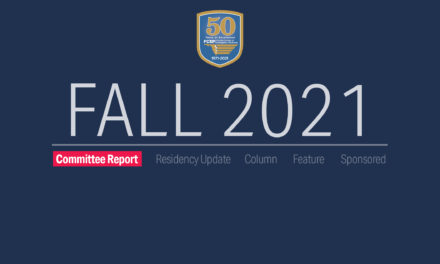Emergency Department Case: Covid-19 Related Guillain-Barre Syndrome
Abstract
SARS-CoV-2 (Covid-19) is commonly associated with respiratory compromise. However, a wide range of neurologic syndromes have been reported over the past year. Of these complications, Guillain-Barre Syndrome (GBS) has manifested in several Covid-19 patients following initial illness. This case report describes a 57-year-old male who presented with acute onset symmetric bilateral lower extremity weakness after a recent Covid-19 infection.
In the emergency department, his cerebrospinal fluid analysis showed an albuminocytologic dissociation consistent with Guillain-Barre Syndrome. Intravenous immunoglobulin treatment was initiated, and the patient was admitted to the hospital. As the incidence of SARS-CoV-2 cases increases, emergency physicians must keep a high index of suspicion for patients with weakness or areflexia following a recent Covid-19 infection. The ability to recognize the disease process in the emergency department could lead to lifesaving supportive care and early treatment.
Introduction
SARS-CoV-2 (Covid-19) is commonly associated with respiratory compromise. However a wide range of neurologic syndromes have been reported over the past year. [1] Of these complications, Guillain-Barre Syndrome (GBS) has manifested in a number of Covid-19 patients following initial infection. [2,3] Guillain-Barre Syndrome is characterized as a demyelinating process leading to symmetric weakness of the extremities and areflexia elicited by a viral or bacterial infection. [4] The peak of the patient’s symptoms usually occurs within four weeks of onset, however patients may present for evaluation early in their course. A high clinical suspicion should guide the diagnosis in the emergency department. A lumbar puncture can support the diagnosis if an albuminocytological dissociation is seen. Nevertheless, a normal CSF cannot exclude the diagnosis in patients presenting earlier than one week of onset of symptoms. [5] This case presentation describes a post-Covid infection patient with clinical symptoms concerning for Guillain-Barre Syndrome.
Case Narrative
A 59-year-old male patient presented to our emergency department reporting symmetric bilateral lower extremity weakness lasting for one day. His weakness had gradually worsened over the past 24 hours, causing difficulty with walking. He also had associated numbness and tingling in his bilateral hands and feet. He had no incontinence or saddle anesthesia. The patient was diagnosed with Covid-19 two weeks prior with a positive test result.
Upon neurological examination, the patient was alert and oriented with no cranial nerve deficits. His muscle strength examination displayed bilateral lower limb weakness of grade four on the MRC scale. His upper extremity strength remained intact. The patient’s sensation was diminished distally to proximally in his bilateral upper and lower extremities. His plantar and patellar reflexes were absent. On gait examination, the patient was staggering and ataxic. He was unable to walk greater than three feet. Due to high suspicion for Guillain-Barre Syndrome, a lumbar puncture was performed following a computed tomography of his brain and cervical spine with no acute abnormalities. His cerebrospinal fluid analysis showed an albuminocytologic dissociation consistent with Guillain-Barre Syndrome. Intravenous immunoglobulin of 0.4g/kg/day was ordered. The patient was admitted to the step-down unit for continued management due to an initial forced vital capacity of >20mL/kg, no respiratory distress, and no difficulty breathing per the patient.
The following day, the patient was transferred to the intensive care unit following difficulty taking deep breaths and declining forced vital capacity. The patient was placed on BiPAP with a low threshold to intubate. His paresis ascended to involve his upper extremities and facial muscles. Magnetic resonance imaging of his brain, cervical spine, thoracic spine, and lumbar spine demonstrated no pathological findings to correlate with his neurological symptoms.
Discussion
In this patient presentation, the initial symptoms were distinctive of Guillain-Barre Syndrome. Every year, 0.4 to 4 per 100,000 people are diagnosed with Guillain-Barre Syndrome. [6,7] According to a retrospective case series, only up to 25% of Guillain-Barre patients are diagnosed on their first visit to the emergency department. [7,8] The low rate of initial diagnosis is alarming, as 10-30% of Guillain-Barre Syndrome patients will develop respiratory muscle weakness requiring ventilatory management. [9] As the incidence of SARS-CoV-2 cases increases, it is imperative that emergency physicians keep a high index of suspicion for patients with neurologic symptoms following a recent Covid-19 infection. Likewise, atypical symptoms should be considered when evaluating the patient including facial or arm weakness, cranial nerve involvement, dysautonomia, and pain from nerve root inflammation. [4,10-12] The ability to recognize the disease process in the emergency department could lead to lifesaving supportive care. Furthermore, the initiation of therapy, plasma exchange or Intravenous Immunoglobulin, causes an accelerated recovery time. [13]
References
- Paterson RW, Brown RL, Benjamin L, et al. The emerging spectrum of COVID-19 neurology: clinical, radiological and laboratory findings. Brain. 2020;143(10):3104-3120. doi:10.1093/brain/awaa240
- Scheidl E, Canseco DD, Hadji-Naumov A, Bereznai B. Guillain-Barré syndrome during SARS-CoV-2 pandemic: A case report and review of recent literature. J Peripher Nerv Syst. 2020;25(2):204-207. doi:10.1111/jns.12382
- Abu-Rumeileh S, Abdelhak A, Foschi M, Tumani H, Otto M. Guillain-Barré syndrome spectrum associated with COVID-19: an up-to-date systematic review of 73 cases. J Neurol. 2021;268(4):1133-1170. doi:10.1007/s00415-020-10124-x
- Sejvar JJ, Baughman AL, Wise M, Morgan OW. Population incidence of Guillain-Barré syndrome: a systematic review and meta-analysis. Neuroepidemiology. 2011;36(2):123-133. doi:10.1159/000324710
- Fokke C, van den Berg B, Drenthen J, Walgaard C, van Doorn PA, Jacobs BC. Diagnosis of Guillain-Barré syndrome and validation of Brighton criteria. Brain. 2014;137(Pt 1):33-43. doi:10.1093/brain/awt285
- McGillicuddy DC, Walker O, Shapiro NI, Edlow JA. Guillain-Barré syndrome in the emergency department. Ann Emerg Med. 2006;47(4):390-393. doi:10.1016/j.annemergmed.2005.05.008
- Noto A, Marcolini E. Select topics in neurocritical care. Emerg Med Clin North Am. 2014;32(4):927-938. doi:10.1016/j.emc.2014.07.015
- Suarez GA, Fealey RD, Camilleri M, Low PA. Idiopathic autonomic neuropathy: clinical, neurophysiologic, and follow-up studies on 27 patients. Neurology. 1994;44(9):1675-1682. doi:10.1212/wnl.44.9.1675
- Alshekhlee A, Hussain Z, Sultan B, Katirji B. Guillain-Barré syndrome: incidence and mortality rates in US hospitals. Neurology. 2008;70(18):1608-1613. doi:10.1212/01.wnl.0000310983.38724.d4
- Moulin DE, Hagen N, Feasby TE, Amireh R, Hahn A. Pain in Guillain-Barré syndrome. Neurology. 1997;48(2):328-331. doi:10.1212/wnl.48.2.328
- Ruts L, Drenthen J, Jongen JL, et al. Pain in Guillain-Barre syndrome: a long-term follow-up study. Neurology. 2010;75(16):1439-1447. doi:10.1212/WNL.0b013e3181f88345
- Flachenecker P. Autonomic dysfunction in Guillain-Barré syndrome and multiple sclerosis [published correction appears in J Neurol. 2008 Feb;255(2):309-10]. J Neurol. 2007;254 Suppl 2:II96-II101. doi:10.1007/s00415-007-2024-3
- Hughes RA, Wijdicks EF, Barohn R, et al. Practice parameter: immunotherapy for Guillain-Barré syndrome: report of the Quality Standards Subcommittee of the American Academy of Neurology. Neurology. 2003;61(6):736-740. doi:10.1212/wnl.61.6.736
This article is part of the following sections:







